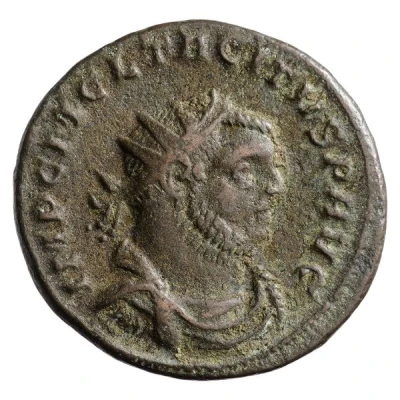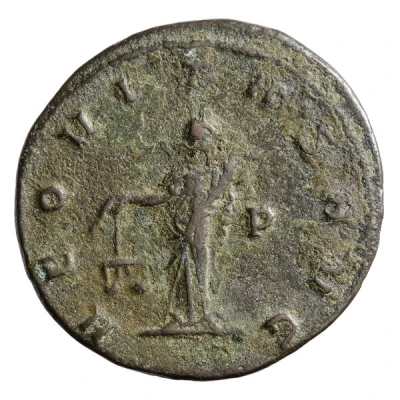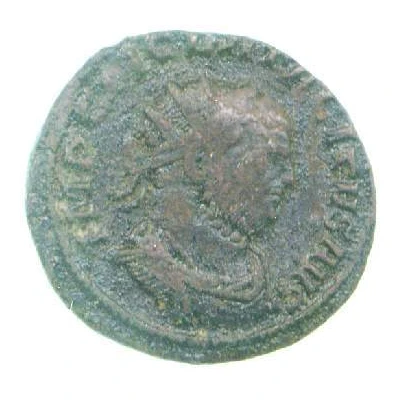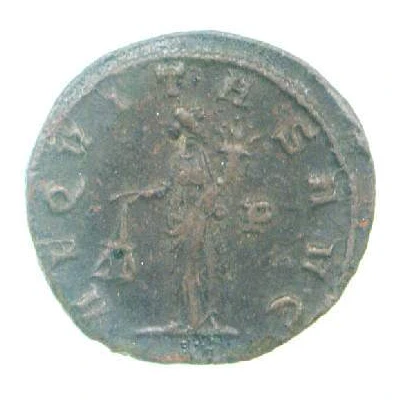


© Münzkabinett der Universität Göttingen (CC BY-NC 4.0 DE)
Antoninianus - Tacitus AEQVITAS AVG; Aequitas
| Silver | 3.8 g | 21.5 mm |
| Issuer | Rome › Roman Empire (27 BC - 395 AD) |
|---|---|
| Emperor | Tacitus (Marcus Claudius Tacitus) (275-276) |
| Type | Standard circulation coin |
| Years | 275-276 |
| Value | Antoninianus (1) |
| Currency | Antoninianus, Reform of Caracalla (AD 215 – 301) |
| Composition | Silver |
| Weight | 3.8 g |
| Diameter | 21.5 mm |
| Shape | Round (irregular) |
| Technique | Hammered |
| Demonetized | Yes |
| Updated | 2024-10-05 |
| Numista | N#291815 |
|---|---|
| Rarity index | 100% |
Reverse
Aequitas, draped, standing left, holding scales in right hand and cornucopiae in left hand.
Script: Latin
Lettering:
AEQVITAS AVG
-/-//P
Translation:
Aequitas Augusti.
Equity of the emperor.
Comment
Example of this type:Münzkabinett der Universität Göttingen
Source:
Online Coins of the Roman Empire (OCRE)
Interesting fact
The Antoninianus coin was introduced during the reign of Emperor Tacitus (275-276 AD) as a replacement for the denarius, which had been the standard Roman silver coin for centuries. The Antoninianus was made of silver, but it was smaller and lighter than the denarius, weighing only 3.8 grams compared to the denarius' 3.9 grams. Despite its smaller size, the Antoninianus was valued at double the denarius, reflecting the inflationary pressures of the time. This coin was used throughout the Roman Empire and was an important part of the Roman economy during the 3rd century AD.

